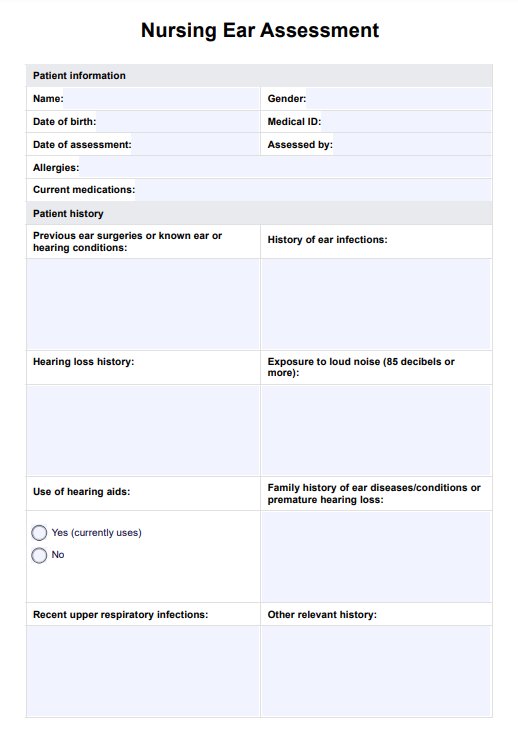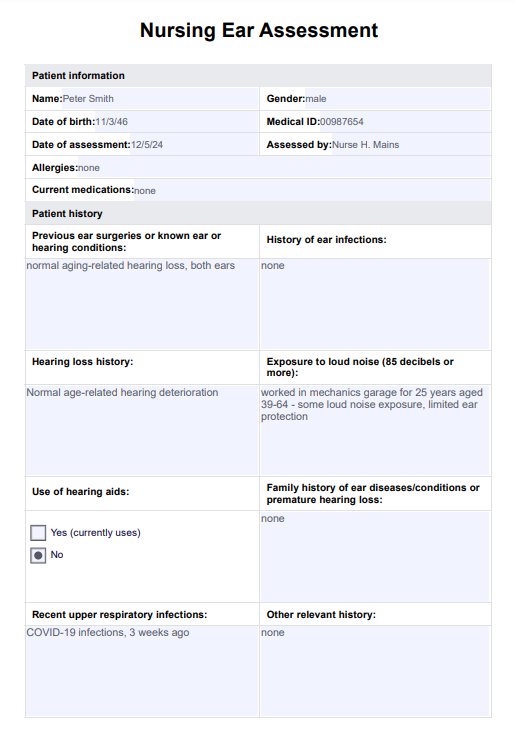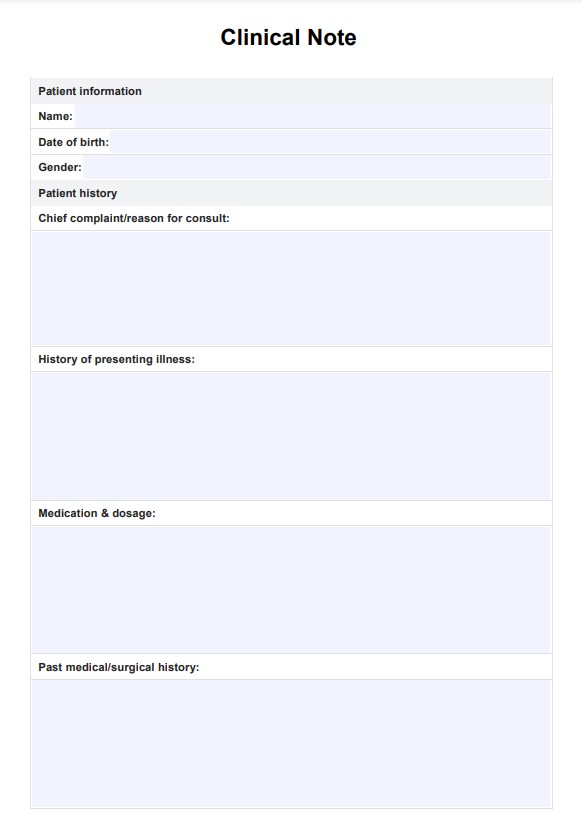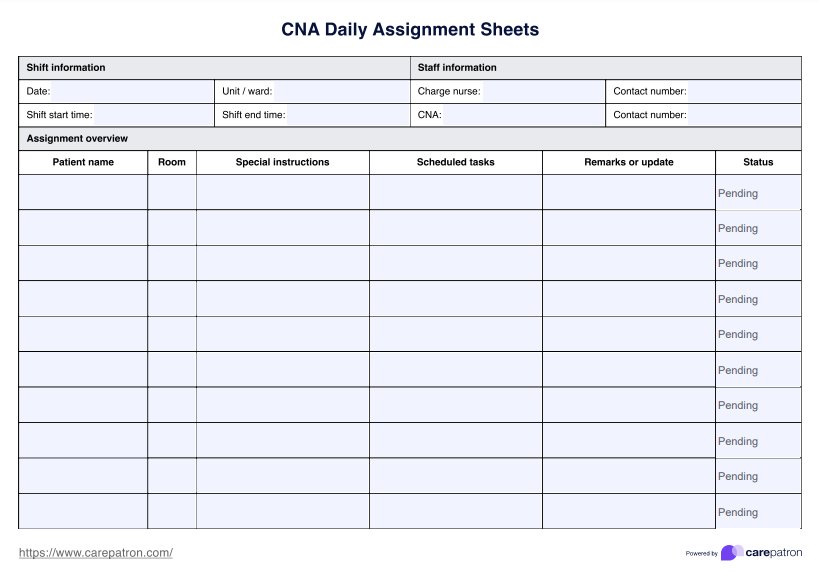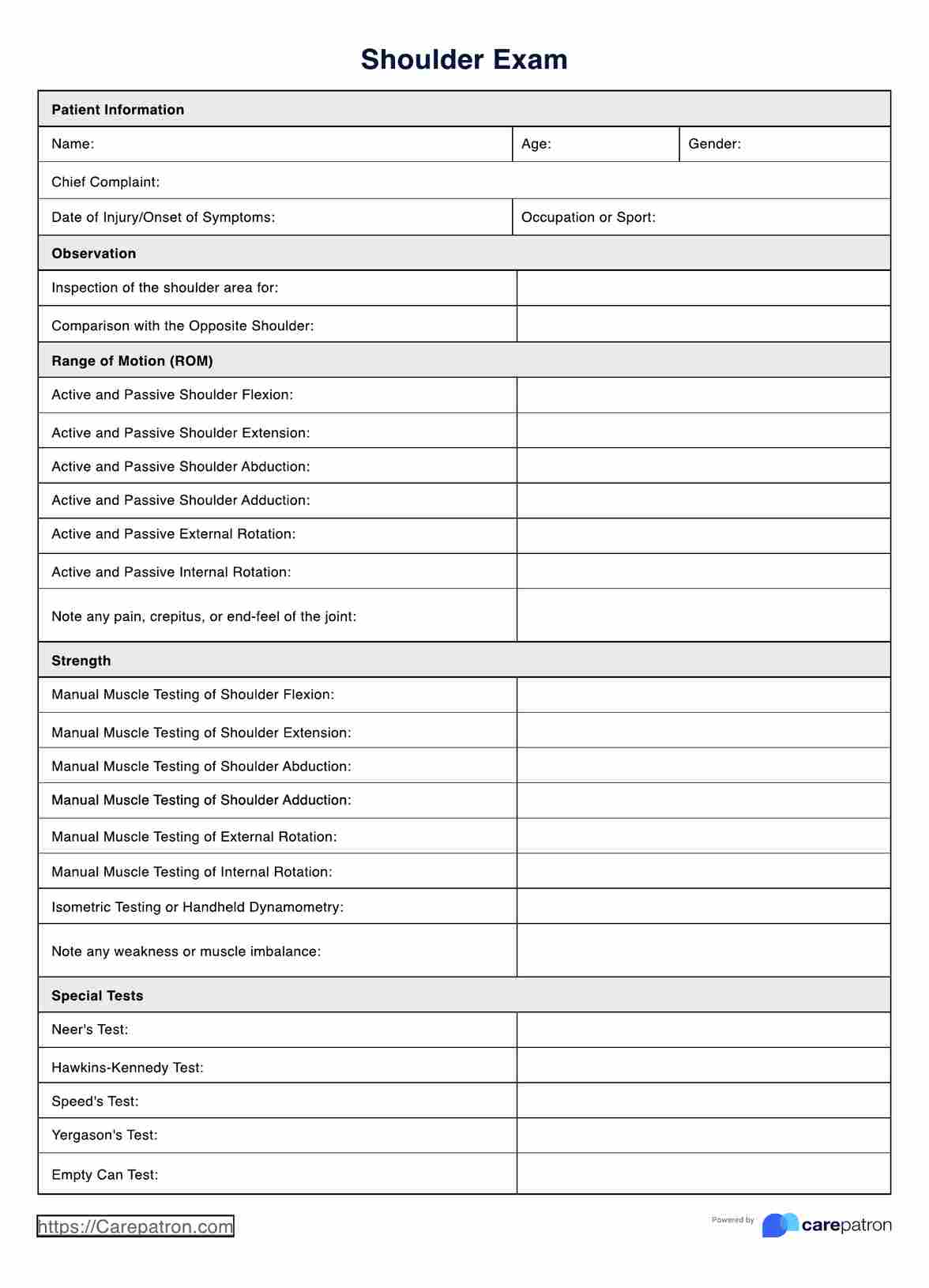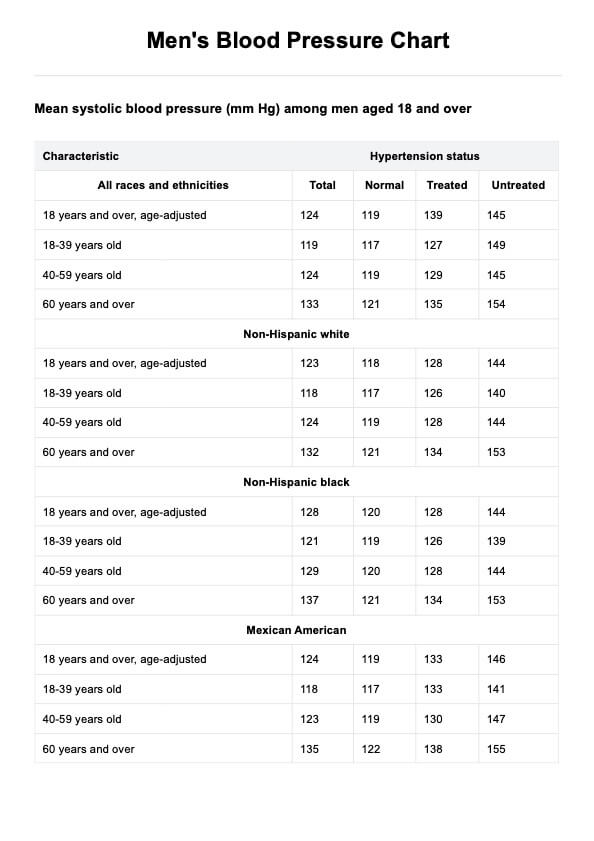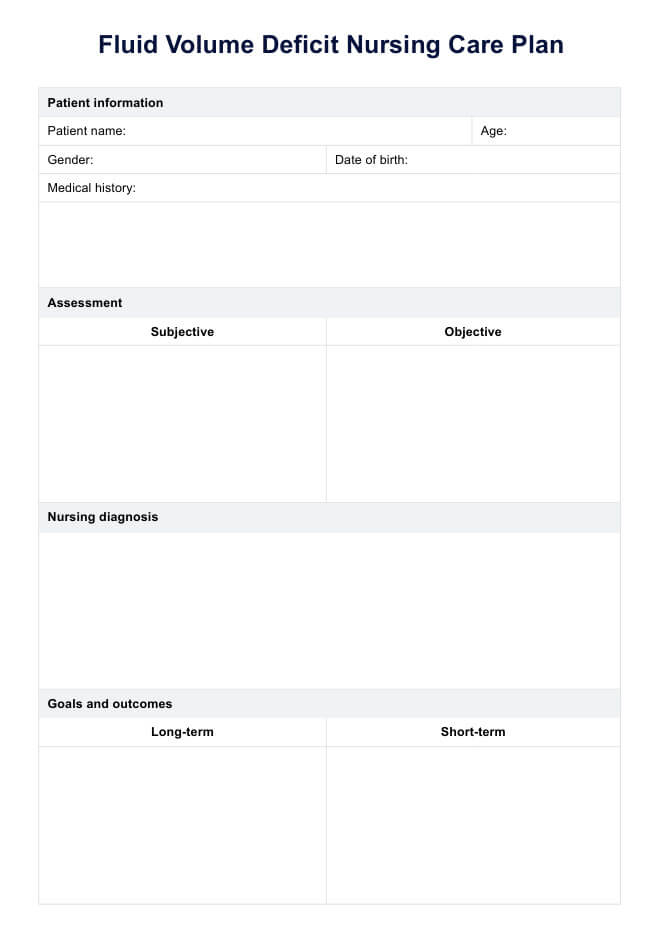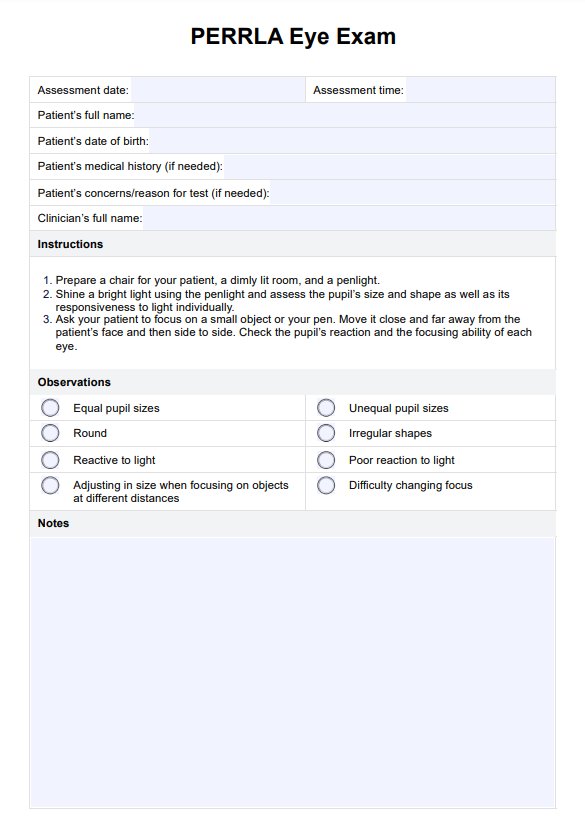What is a Nursing Ear Assessment?
Nursing professionals may conduct an ear assessment as part of a patient's overall ear health evaluation, particularly when addressing hearing, balance, and ear health concerns. This assessment thoroughly and systematically examines the external, middle, and inner ear structures.
Nurses employ various physical examination techniques to identify abnormalities, infections, or conditions that may impact hearing or balance. By integrating visual inspection, auditory testing, and specialized tools, nurses can detect issues ranging from common ear infections to more complex hearing impairments like conductive and sensorineural hearing loss.
An ear health assessment also considers patient history, the use of hearing aids, and any symptoms reported by the patient or observed during the examination. Through this comprehensive approach, nursing professionals play a pivotal role in the early identification and management of ear-related health issues, ensuring patients receive timely and appropriate care.
Nursing Ear Assessment Template
Nursing Ear Assessment Example
How to use this Nursing Ear Assessment template
This template is designed to help healthcare professionals (specifically nurses) to conduct a comprehensive assessment of a patient's ear health and hearing status. It serves as a structured guide for performing objective examinations and subjective evaluations during the patient encounter. Follow these steps to use this template:
Step 1: Access the template
Click the "Use template" button to open the Nursing Ear Assessment template on the Carepatron app. Alternatively, you can get a non-customizable but fillable PDF by clicking "Download."
Step 2: Gather key information
Begin by introducing yourself and explaining the purpose of the assessment to the patient. Record key demographic details. Ask the patient about current or past ear problems, such as ear pain, ear discharge, or hearing difficulties.
Step 3: Physical examination
Conduct a physical examination of the external ear, including inspection and palpation for abnormalities or tenderness. Use an otoscope to examine the tympanic membrane for signs of infection, fluid buildup, or other abnormalities.
Step 4: Hearing, speech recognition, and ear function tests
Perform a hearing test using a tuning fork or audiometer to assess the patient's ability to hear different tones and volumes. Administer speech recognition tests to evaluate the patient's understanding of spoken words at various volumes and in varying background noise levels. Use specific ear function tests, if available, to assess the patient's balance and coordination.
Step 5: Document findings and plan the next steps
After each test, document all findings in detail, including any abnormalities or concerns. Based on the assessment results, discuss potential diagnoses, treatment options, and follow-up care plans with the patient, your team, and your patient's family members.
Step 6: Make recommendations
Based on your findings, make recommendations to the patient regarding ear health maintenance and prevention of common ear problems. If they have presented with a specific ear condition, it may be necessary to refer them for further medical assessment or treatment, or schedule follow up appointments.
Note that this ear assessment is a comprehensive evaluation meant only for nurses to conduct. However, ear specialists can conduct the various tests that are part of the assessment, such as hearing tests and otoscope examinations.
Potential findings of the Nursing Ear Assessment
If no abnormalities or problems are detected during the assessment, this indicates healthy ear function and the absence of hearing loss or ear pathology. Abnormal findings in ear assessments and hearing tests point to possible hearing impairments, infections, or other ear pathologies. Here are some common examples of normal and abnormal results:
General assessment
- Normal: The patient reports no history of frequent ear infections, hearing loss, pain, or ear discomfort. No difficulty with balance suggests normal inner ear function.
- Abnormal: The patient reports symptoms such as tinnitus, vertigo, or a history of frequent ear infections, which could indicate various underlying conditions like Meniere's disease, chronic otitis media, or acoustic neuroma.
Visual inspection
- Normal: The external ear, ear canal, and tympanic membrane appear structurally intact, with no signs of inflammation, discharge, lesions, or blockages. The tympanic membrane should be pearly gray and show a light reflex.
- Abnormal: Signs of infection (e.g., redness, swelling), discharge, wax blockage, or damage to the tympanic membrane (e.g., perforation) are observed. These abnormalities may indicate conditions like otitis media, otitis externa, or tympanic membrane perforation.
Whisper test
- Normal: The patient correctly repeats the words or phrases whispered from arm's length, indicating average hearing ability.
- Abnormal: The patient cannot correctly repeat the whispered words or phrases, suggesting possible deterioration or blockage to hearing.
Weber test
- Normal: Sound is perceived as equally loud in both ears, suggesting symmetric hearing.
- Abnormal: The sound lateralizes to one ear, indicating either sensorineural hearing loss in the non-lateralizing ear or conductive hearing loss in the lateralizing ear.
Rinne test
- Normal: Air conduction (AC) is better than bone conduction (BC) in both ears, with a AC>BC ratio in the typical range. This indicates that the ear's conductive mechanisms are functioning properly.
- Abnormal: Bone conduction (BC) is perceived as louder than air conduction (AC) in the affected ear (BC>AC), indicative of conductive hearing loss. Alternatively, if AC is reduced significantly even though it is better than BC, this may suggest sensorineural hearing loss.
Tympanometry
- Normal: Produces a type A curve, indicating normal middle ear pressure and compliance.
- Abnormal: Produces a curve that is not type A, such as type B (flat curve, indicating fluid in the middle ear) or type C (negative pressure peak, suggesting eustachian tube dysfunction), pointing to possible middle ear problems.
Identifying normal versus abnormal findings is crucial for accurately diagnosing ear conditions and initiating appropriate treatment or referrals to specialists like audiologists or otolaryngologists. Early detection and management of ear and hearing problems can significantly improve patients' outcomes and quality of life.
Frequently asked questions
A Nursing Ear Assessment is a thorough evaluation of the external ear canal, middle ear, and inner ear to identify any abnormalities or signs of ear disorders. It typically entails a physical inspection, otoscopy (to look at the ear canal and tympanic membrane), hearing tests (to detect hearing impairment), and patient interviews (to understand symptoms like ear pain or discharge). Nurses also assess the need for interventions such as ear drops or hearing aids based on the patient's status.
Nurses perform basic hearing assessments to detect hearing impairment, including whispered voice tests and tuning fork tests. These determine if the patient has difficulty hearing, which might indicate issues within the external, middle, or inner ear. The nurse evaluates how the patient responds to auditory cues.
In pediatric ear assessments, nurses look for signs of frequent ear infections and middle ear fluid. They also check developmental milestones related to hearing and speech are being met. The prevalence of specific inner ear abnormalities and the approach to ear examination may differ from children to adults. Pediatric assessments often include observing behavioral cues and relying on reports from caregivers or teachers about the child's hearing and response to auditory stimuli.
Get started for free
*No credit card required


